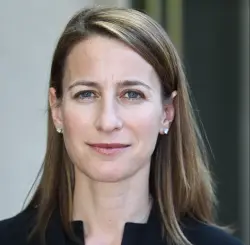It was just that time of year again when it is nearly impossible to travel east of 3rd Avenue in midtown New York. But much more than a commuter’s headache, these few days each September represent the annual gathering of world leaders to take stock of progress made and (re)commit to action in addressing global crises and challenges. Not least of these is the status of educating our children for the future.
A new report recently published by the Education Commission, Investing in Knowledge Sharing to Achieve SDG 4—and written by the Center for Global Education at Asia Society, Results for Development, Teach For All, The Boston Consulting Group, and World Innovation Summit for Education—outlines actions to advance and sustain progress toward Sustainable Development Goal (SDG) 4. This goal revolves around the global community’s commitment to achieve quality education and lifelong learning for all by 2030. A headline message in this new report is that how resources are allocated is just as important as the amount of resources available for global education—a key finding echoed in the Learning Generation report. One way to do this, the report argues, is through cross-border knowledge-sharing. Evidence and data alone are not enough; there is also a need to invest in infrastructure that enables knowledge creation and sharing. The authors go on to highlight three key elements that need effective investment: global public goods, capacity development, and networks. They argue, “these components create an integrated infrastructure that allows actors to leverage insights from one place to use in another, helping confront common challenges and accelerate global progress in the education sector.”
At the Center for Universal Education (CUE), we couldn’t agree more. These concepts have been at the core of CUE’s work for many years. What do these three inter-related elements look like in practice?
1. More and better investments in global public goods to codify knowledge, enhance transparency, and reduce duplication
As highlighted in the report, only three percent of education development assistance goes toward global public goods. This figure stands at 21 percent of total global health assistance. We found in research for Millions Learning that early investments in science in other sectors—such as health and food security—enabled faster scaling later. Education, however, lacks the kind of research and development (R&D) culture that many other sectors employ, investing large sums in developing new products or solutions, plus the subsequent experimentation that allows the most successful ideas to adapt and go to scale. For example, in 1971, the Consultative Group for International Agricultural Research (CGIAR) was created to conduct research on agriculture economics and policy and then share findings across borders. It has grown to become the world’s largest global agricultural innovation network. Over a 40-year period, every $1 invested in CGIAR has led to $9 worth of additional food production in the developing world.
2. More and better investments in capacity development to translate knowledge into practice
At the same time, we have learned that creating a public good, such as an open-source dataset or a new assessment tool, is just one step. Other strategies must follow to ensure these public goods actually reach “intended users” and that there is sufficient capacity and skills to act on them. This recognition has been behind the work of CUE’s Optimizing Assessment for All project, which supports governments in several countries across Asia and Africa as they integrate 21st century skills into their learning, teaching, and assessment practices. The project uses a collaborative learning approach to build the capacity of national-level education stakeholders in assessment design and data collection, and then shares lessons learned through regional networks on both continents. Building local capacity is also an underlying driver behind the Millions Learning Real-Time Scaling Labs, where CUE is partnering with local institutions in a number of countries to co-create an adaptive learning process to learn from, support, and document education interventions as they scale.
3. More and better investments in networks to facilitate knowledge sharing and capacity strengthening
Networks are an integral component to the ecosystem. They can help to reduce duplication by ensuring an appropriate division of labor, enhance impact by spreading new ideas and practices, as well as strengthen capacity on the use of public goods. To advance innovative solutions in girls’ education, the Collaborative for Harnessing Ambition and Resources for Girls’ Education (Girls CHARGE), comprised of 66 network partners, have committed up to $850 million to reach approximately 15 million girls worldwide by 2019. The Scaling Up Community of Practice—co-curated by Larry Cooley and Johannes Linn and with Management Systems International acting as secretariat—is an example of a multi-stakeholder group of donors, foundations, and think tanks that work together across sectors to find innovative ways to scale up development impact. Research conducted by CUE found the critical, yet under-funded role secretariats can play in adapting, scaling, and sustaining effective policies and practices. These backbone teams help codify learning, provide technical assistance to members, and facilitate sharing among members.
As the new report argues, ensuring that those frenetic few days in New York translate into real change in people’s lives will require smart, sufficient, and catalytic investments in global public goods; effective networks; and enhanced capacity to identify, evaluate, adapt, and take up knowledge shared. While these may not be new concepts, they certainly do raise the question, as asked by Dr. Liesbet Steer, Director of the Education Commission, at the report launch last month, “are we implementing the obvious?”
The Brookings Institution is committed to quality, independence, and impact.
We are supported by a diverse array of funders. In line with our values and policies, each Brookings publication represents the sole views of its author(s).





Commentary
Investing in global knowledge sharing for our children
New report highlights 3 areas for education investment
October 10, 2018